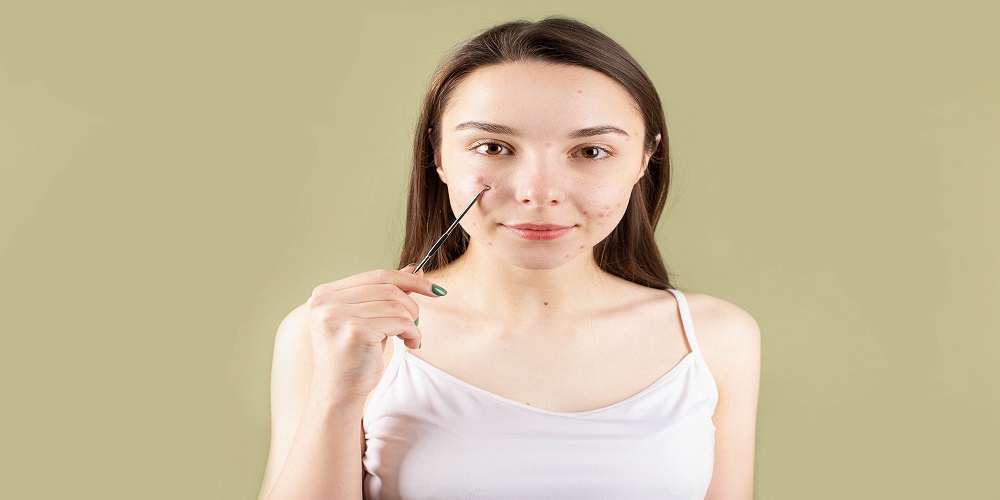How to Treat Acne? (The Definitive Guide)
Acne is a common skin condition that affects nearly everyone at some point. It can be mild, moderate, or severe and manifests through pimples, blackheads, whiteheads, and cysts.
Although many treatments are available over-the-counter and via prescription, they only work for some.
This guide will provide the following:
- An overview of what acne is.
- The different types of acne.
- Causes of acne.
- Treatments are available over-the-counter and via prescriptions.
- Lifestyle changes may help in treating acne.

What is Acne?
Acne is a skin disorder caused by inflammation of the sebaceous glands that produce oil for the skin.
It usually occurs on the face, neck, chest, back, and shoulders but can also occur on other parts of the body.
Acne often begins during puberty when hormones increase in oil production. It can affect men and women of any age but is more common in people aged 11-30.
Different Types of Acne
There are several different types of acne with varying symptoms. The most common type is known as “acne vulgaris,” which includes whiteheads (pimples surrounded by a layer of skin), blackheads (open comedones), papules (swollen red bumps), and pustules (white pus-filled lesions).
Other types include:
- Cystic acne is a large deep lesion filled with pus.
- Nodular acne is a painful bump just under the skin’s surface.
- Rosacea appears as redness on the cheeks and nose with broken blood vessels visible beneath the surface.
Causes of Acne
Although it is not yet fully understood why some people get acne while others do not, certain factors can contribute to its development, such as:
- Hormonal changes during puberty or pregnancy
- Genetic predisposition
- Poor hygiene
- Stress
- Certain medications
- A diet high in dairy products or processed foods
- Environmental toxins from pollution or smoking
- Excessive sweating; friction from tight clothing or headgear; cosmetics containing oils or fragrances, etc.
Treatment for Mild Acne with Over-the-Counter Products
For those suffering from mild forms of acne, such as whiteheads or blackheads, over-the-counter products may help reduce symptoms.
These typically contain active ingredients such as benzoyl peroxide, which helps unclog pores and kill bacteria that cause breakouts.
Salicylic acid also helps reduce inflammation, while sulfur helps dry out oily areas where bacteria thrive best. Over-the-counter products should always be used according to instructions given on the packaging to avoid irritation or further inflammation of the treated area.
Treatment for Moderate-to-Severe Acne with Over-the-Counter Products
When over-the-counter products fail to work for more stubborn cases such as nodular or cystic acne, a doctor may prescribe stronger medications such as antibiotics (taken orally) or topical retinoids (applied directly to affected areas).
Antibiotics help reduce inflammation, while retinoids work by shedding dead skin cells faster so they don’t clog pores, causing breakouts.
In severe cases, isotretinoin may be prescribed to treat cystic acne. However, this medication should only be taken under strict medical supervision due to potential side effects, including congenital disabilities, if pregnant.
Verdict!
No matter the severity of your symptoms, there are plenty of ways to effectively manage outbreaks caused by acne so you can enjoy a clearer complexion.
Remember that every individual’s experience is different, so consult a professional before beginning any treatment regimen to ensure you get the best results possible.
Regarding this, thankfully, there are a variety of acne treatment clinics that can help improve the condition of your skin and reduce the frequency and intensity of breakouts.



